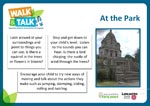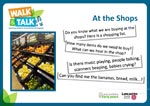
 There’s something truly magical about childhood spent outdoors — the feel of grass under little feet, the thrill of climbing onto a rustic log for the first time, the delight in spotting a ladybird on a leaf, or precious time spent playing with friends. However, in today’s busy, screen-filled world, many children spend far less time outside than previous generations. For children in their early years — toddlers and preschoolers — this simple joy isn’t just fun; it is essential for learning, growth, and wellbeing. Today’s guide explores why outdoor play is so important and offers practical ideas for making it part of everyday life.
There’s something truly magical about childhood spent outdoors — the feel of grass under little feet, the thrill of climbing onto a rustic log for the first time, the delight in spotting a ladybird on a leaf, or precious time spent playing with friends. However, in today’s busy, screen-filled world, many children spend far less time outside than previous generations. For children in their early years — toddlers and preschoolers — this simple joy isn’t just fun; it is essential for learning, growth, and wellbeing. Today’s guide explores why outdoor play is so important and offers practical ideas for making it part of everyday life.
Why Outdoor Play Matters in the Early Years
The first five years of life are a period of extraordinary growth. Every day brings new experiences, discoveries, and opportunities for children to develop cognitively, physically, emotionally, and socially. Outdoor play gives children the richest of environments to explore all these aspects naturally.
“Outdoor play is not an optional extra; it is a vital part of healthy early childhood development.”
 Being outdoors provides more than just fresh air — it encourages movement, sparks curiosity, inspires confidence, and helps children develop in a myriad of ways. Whether they are running across a playground, climbing a tree, or watching an insect on a leaf, children are learning about the world around them and practising skills that will serve them for years to come. Outdoor play is not an optional extra; it is a vital part of healthy early childhood development.
Being outdoors provides more than just fresh air — it encourages movement, sparks curiosity, inspires confidence, and helps children develop in a myriad of ways. Whether they are running across a playground, climbing a tree, or watching an insect on a leaf, children are learning about the world around them and practising skills that will serve them for years to come. Outdoor play is not an optional extra; it is a vital part of healthy early childhood development.
Some of the Many Benefits of Outdoor Play
Enhanced Physical Development
 Young children need to build fitness, strength, coordination, and balance, and outdoor play is perfect for this. Running across open spaces, jumping over puddles, or navigating uneven ground all support fitness, muscular development, and bone health. Even small movements like digging in the garden or balancing on playground equipment help children grow stronger, hone balance and coordination, and become more agile.
Young children need to build fitness, strength, coordination, and balance, and outdoor play is perfect for this. Running across open spaces, jumping over puddles, or navigating uneven ground all support fitness, muscular development, and bone health. Even small movements like digging in the garden or balancing on playground equipment help children grow stronger, hone balance and coordination, and become more agile.
Cognitive Growth
The outdoors is full of opportunities for learning through exploration. Children discover cause and effect, practise problem-solving, and develop creativity as they invent games or use natural materials like sticks and stones in imaginative play. The unpredictability of natural environments challenges young minds in ways indoor spaces often cannot.
Improved Social and Emotional Wellbeing
 Playing outside with other children is huge fun! It also teaches important social skills, such as sharing, taking turns, and cooperating. It also nurtures emotional resilience — learning to manage disappointment when a game doesn’t go their way, or the thrill of conquering a slightly scary obstacle, helps build confidence. Outdoor play also offers children a sense of freedom and independence, which is crucial for developing self-esteem.
Playing outside with other children is huge fun! It also teaches important social skills, such as sharing, taking turns, and cooperating. It also nurtures emotional resilience — learning to manage disappointment when a game doesn’t go their way, or the thrill of conquering a slightly scary obstacle, helps build confidence. Outdoor play also offers children a sense of freedom and independence, which is crucial for developing self-esteem.
A Connection with Nature
Time spent outdoors fosters curiosity about the natural world and can encourage care and respect for the environment. Observing seasonal changes, noticing insects, or hearing birds sing provides sensory experiences that support relaxation and reduce stress, even for very young children. It’s a magical world out there and, all on its own, nature holds an enormous range of benefits for children — and adults!
Everyday Outdoor Play Doesn’t Need to Be Complicated
 Some parents may worry that they need large gardens or special equipment to provide meaningful outdoor play, but this isn’t the case. The simplest activities can often be the most rewarding. Jumping in or over puddles, drawing with chalk on the pavement, building things with sticks, or collecting leaves are all rich in learning opportunities. Even short, daily bursts of outdoor play — a walk to the local shop, a few minutes in the garden, or time spent in a nearby park — all add up and make a real difference to children’s development.
Some parents may worry that they need large gardens or special equipment to provide meaningful outdoor play, but this isn’t the case. The simplest activities can often be the most rewarding. Jumping in or over puddles, drawing with chalk on the pavement, building things with sticks, or collecting leaves are all rich in learning opportunities. Even short, daily bursts of outdoor play — a walk to the local shop, a few minutes in the garden, or time spent in a nearby park — all add up and make a real difference to children’s development.
Seasonal Opportunities for Outdoor Play
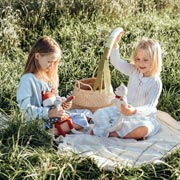 Outdoor play offers unique possibilities throughout the year. In spring, puddles, mud, and budding flowers provide endless opportunities for springtime exploration. Summer brings longer days that are perfect for nature walks, picnics, and bug hunts. Autumn invites children to play with fallen leaves, explore changing colours, and collect natural treasures. Even winter offers adventure: frosty mornings, snow if it falls, or simply noticing the crisp air and watching breath cloud in the cold. Outdoors, every season can become an opportunity for discovery and growth.
Outdoor play offers unique possibilities throughout the year. In spring, puddles, mud, and budding flowers provide endless opportunities for springtime exploration. Summer brings longer days that are perfect for nature walks, picnics, and bug hunts. Autumn invites children to play with fallen leaves, explore changing colours, and collect natural treasures. Even winter offers adventure: frosty mornings, snow if it falls, or simply noticing the crisp air and watching breath cloud in the cold. Outdoors, every season can become an opportunity for discovery and growth.
Safety and Confidence Outdoors
It’s natural for parents to feel cautious about outdoor play, whether worried about mishaps, inclement weather, or clothes getting dirty — but that’s where a little preparation can help. Dressing children appropriately for the conditions, supervising but allowing independence, and accepting a bit of mess as part of the experience, will all help children to play freely and safely. Small risks — like climbing a low tree branch or balancing along a path — are not only manageable but also valuable for learning self-confidence, risk assessment, and resilience in little ones.
Making Outdoor Play a Habit
 The best way to reap the benefits of outdoor play is to make it a regular part of your child’s routine. Even brief, daily sessions of outdoor activity have lasting benefits. Walks to the park, nursery, or school, time spent exploring a garden, or creating simple outdoor rituals like a nature scavenger hunt can all help children become comfortable, confident, and enthusiastic about playing outside.
The best way to reap the benefits of outdoor play is to make it a regular part of your child’s routine. Even brief, daily sessions of outdoor activity have lasting benefits. Walks to the park, nursery, or school, time spent exploring a garden, or creating simple outdoor rituals like a nature scavenger hunt can all help children become comfortable, confident, and enthusiastic about playing outside.
For parents juggling busy schedules, small, consistent steps can work wonders — outdoor play doesn’t need to be perfect or elaborate! Indeed, outdoor play is one of the simplest and most powerful gifts you can give a child. It supports physical growth, cognitive development, social skills, emotional wellbeing, and a lasting connection with the natural world. By encouraging children to explore, imagine, and move freely outside, parents set the stage for healthy, happy childhoods.
Outdoor Play & More at Little Acorns Nursery
A High-Quality Childcare Service in Padiham

 At Little Acorns Nursery in Padiham, we understand the value of outdoor play and ensure children experience it whenever possible. Whether in our outdoor play areas, our garden and its nature zone, in local parks, or in the nearby countryside, children will thrive when given space to move, explore, and enjoy the wonders of the outdoors — under close supervision, of course. Outdoor play is just one part of the comprehensive early years experience that children under five get to benefit from at our high-quality childcare setting. We are graded as a good provider by Ofsted and support free/funded childcare hours for eligible families. Contact us today if you’d like to find out more, enrol your child for a nursery place, or ask any questions — we’re here to help!
At Little Acorns Nursery in Padiham, we understand the value of outdoor play and ensure children experience it whenever possible. Whether in our outdoor play areas, our garden and its nature zone, in local parks, or in the nearby countryside, children will thrive when given space to move, explore, and enjoy the wonders of the outdoors — under close supervision, of course. Outdoor play is just one part of the comprehensive early years experience that children under five get to benefit from at our high-quality childcare setting. We are graded as a good provider by Ofsted and support free/funded childcare hours for eligible families. Contact us today if you’d like to find out more, enrol your child for a nursery place, or ask any questions — we’re here to help!
Little Acorns is a wonderful nursery in Padiham that may also be convenient to families living nearby in Burnley, Hapton, Rose Grove, Altham, Huncoat, Read, Simonstone, Sabden, Higham, or Wood End.
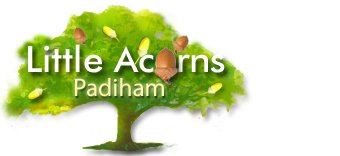
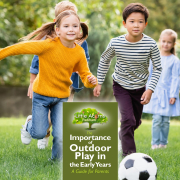
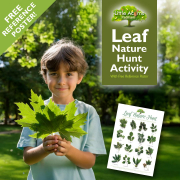
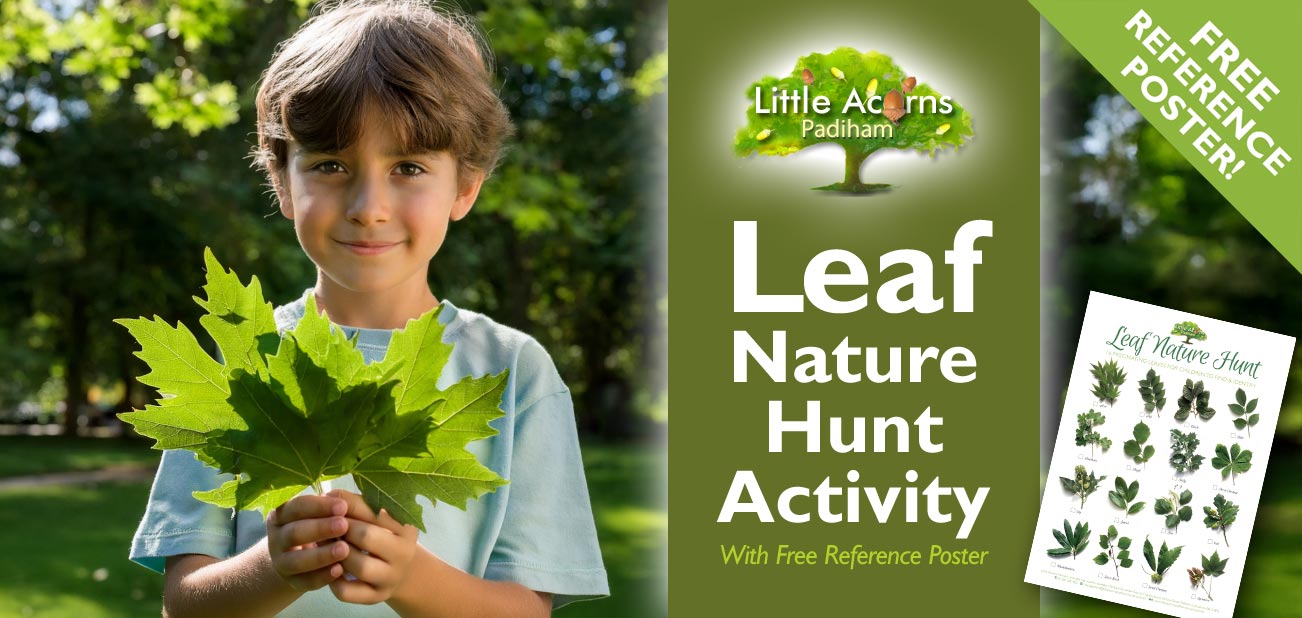
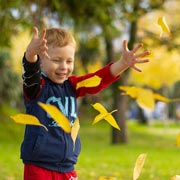 Summer and autumn are wonderful times for children to experience nature in its full glory. At such times, the natural world is brimming with colourful flora and fauna, and it’s a spectacular feast for their eyes and senses. Outdoors, little ones can learn an enormous amount about the natural world around them, enjoy some fresh air and freedom – under supervision, of course — and reap the
Summer and autumn are wonderful times for children to experience nature in its full glory. At such times, the natural world is brimming with colourful flora and fauna, and it’s a spectacular feast for their eyes and senses. Outdoors, little ones can learn an enormous amount about the natural world around them, enjoy some fresh air and freedom – under supervision, of course — and reap the 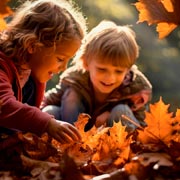
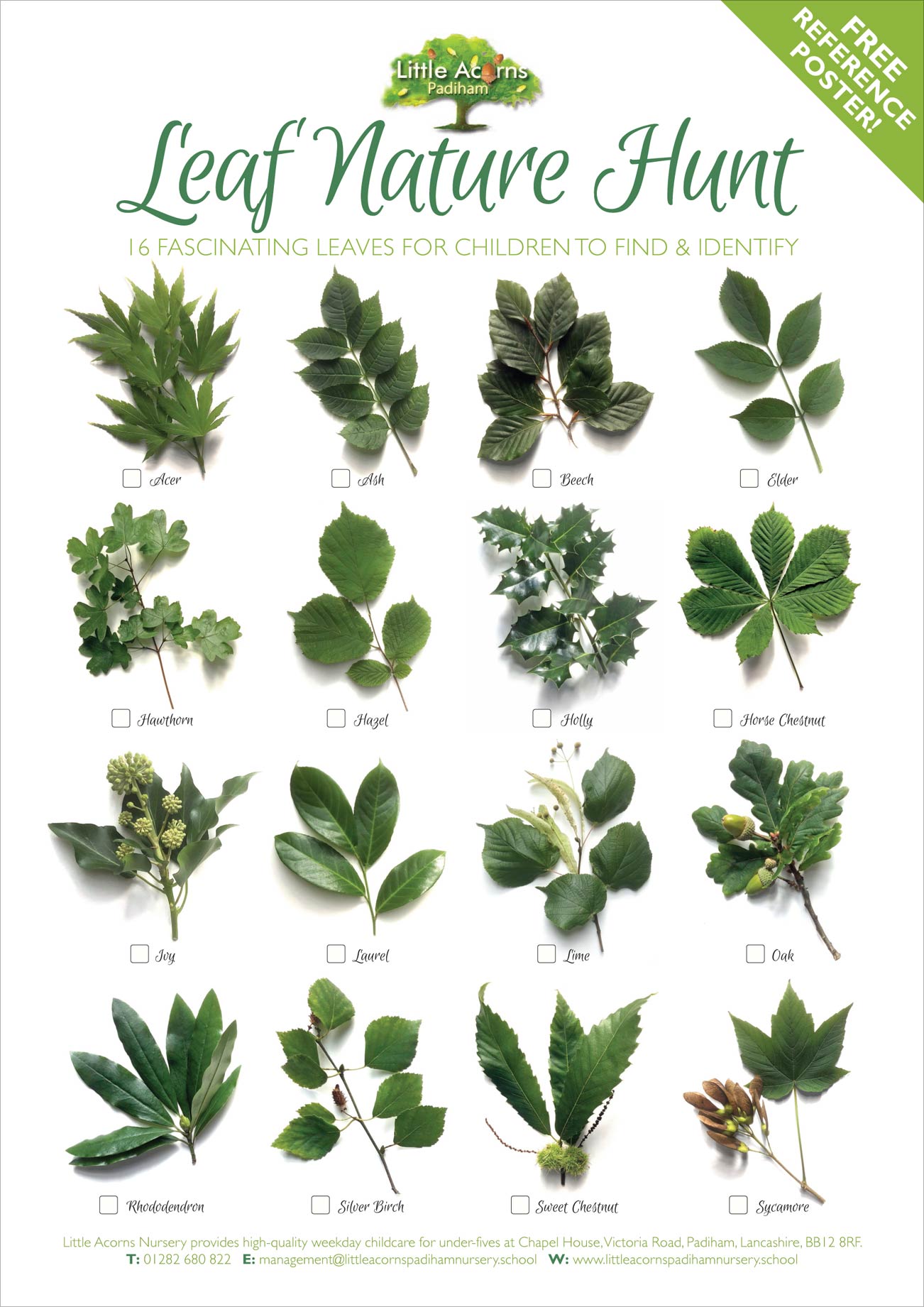
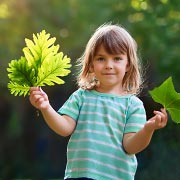 Point out the huge variety of different shapes, sizes, and textures of leaves in the natural world.
Point out the huge variety of different shapes, sizes, and textures of leaves in the natural world.
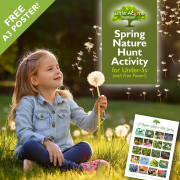
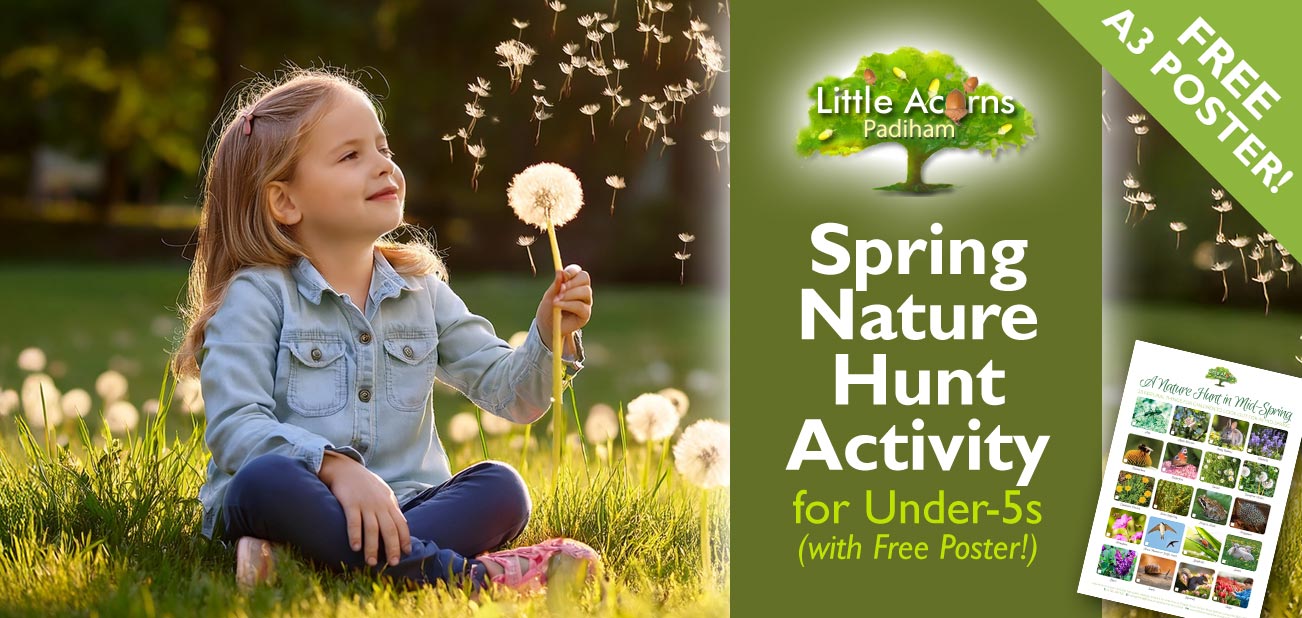
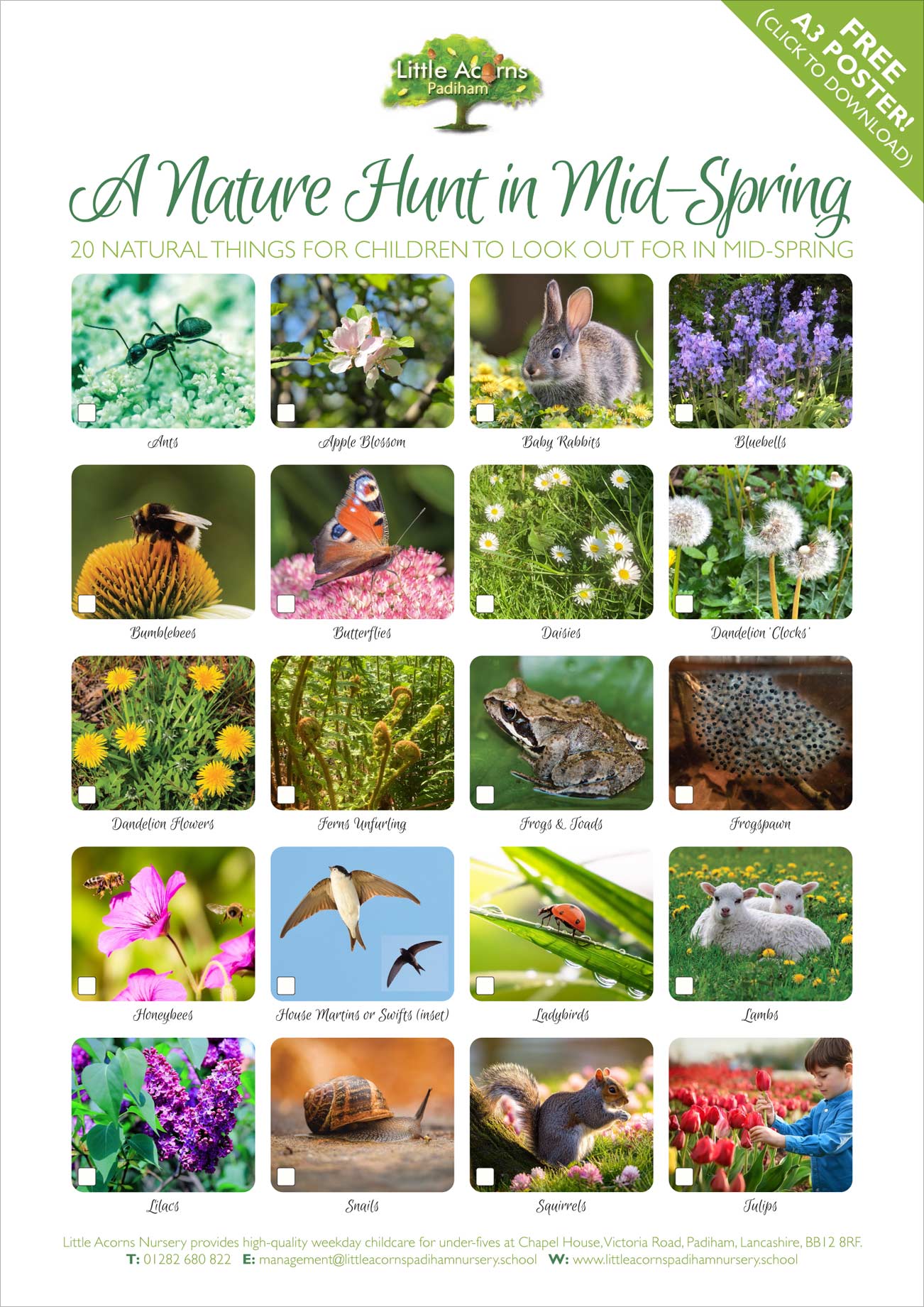
 Bluebells also come in pink or white. They’re referred to as pinkbells (also known as pink bluebells and Spanish bluebells) and whitebells (or white bluebells).
Bluebells also come in pink or white. They’re referred to as pinkbells (also known as pink bluebells and Spanish bluebells) and whitebells (or white bluebells). Does your child know about bee nectar baskets? Those are the little yellow leg pouches that can be seen on some bumblebees’ and honeybees’ legs. They are where the bees collect and store their nectar ready to transport back to the hive.
Does your child know about bee nectar baskets? Those are the little yellow leg pouches that can be seen on some bumblebees’ and honeybees’ legs. They are where the bees collect and store their nectar ready to transport back to the hive. We’ve said before — and we’ll keep on saying — nature is incredibly good for children and adults alike. But what are some of the benefits, and why is nature so important to children? Well, we wrote an article about it and you can read our top
We’ve said before — and we’ll keep on saying — nature is incredibly good for children and adults alike. But what are some of the benefits, and why is nature so important to children? Well, we wrote an article about it and you can read our top 

 Calling all little citizen scientists — we need your help — and parents too! During part of July and early August the Big Butterfly Count takes place across the UK and the more children and families that take part, the better. All it needs to take is 15 minutes and taking part will help butterflies, daytime-flying moths and the conservation of nature and biodiversity in general. What’s more, it’s a free, enjoyable, educational, and hugely worthwhile activity for children and families to take part in. In today’s post, we’ll tell you everything you need to know in order to take part in 2024’s Big Butterfly Count. Little citizen scientists: get ready!
Calling all little citizen scientists — we need your help — and parents too! During part of July and early August the Big Butterfly Count takes place across the UK and the more children and families that take part, the better. All it needs to take is 15 minutes and taking part will help butterflies, daytime-flying moths and the conservation of nature and biodiversity in general. What’s more, it’s a free, enjoyable, educational, and hugely worthwhile activity for children and families to take part in. In today’s post, we’ll tell you everything you need to know in order to take part in 2024’s Big Butterfly Count. Little citizen scientists: get ready! You’ll need a tiny bit of preparation, but it’s quick, free, and easy…
You’ll need a tiny bit of preparation, but it’s quick, free, and easy…

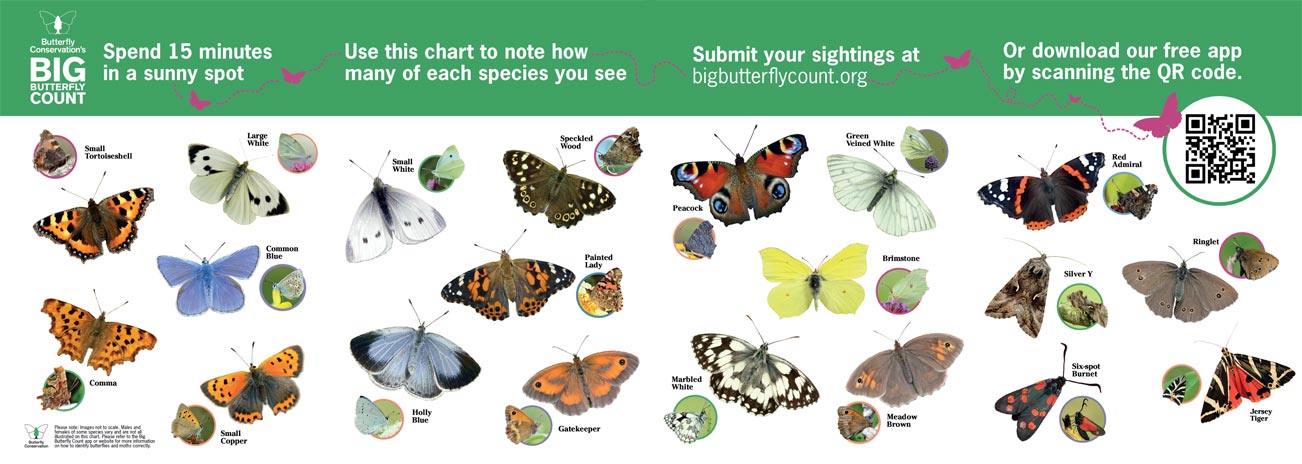
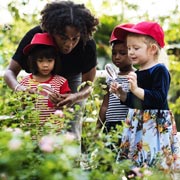 Once you’ve chosen a suitable location that has flowers blooming and is ideally sunny and sheltered, you are ready to count butterflies and submit them to the Big Butterfly Count survey.
Once you’ve chosen a suitable location that has flowers blooming and is ideally sunny and sheltered, you are ready to count butterflies and submit them to the Big Butterfly Count survey.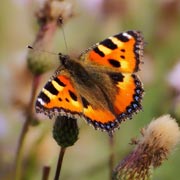 In addition to taking part in the Big Butterfly Count, children and families can help butterflies in other simple ways too. What’s more, they’re also fun, educational, and make the world a better place. Additional ways to help butterflies – and other pollinators – include:
In addition to taking part in the Big Butterfly Count, children and families can help butterflies in other simple ways too. What’s more, they’re also fun, educational, and make the world a better place. Additional ways to help butterflies – and other pollinators – include: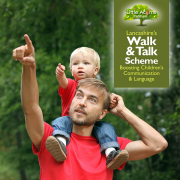
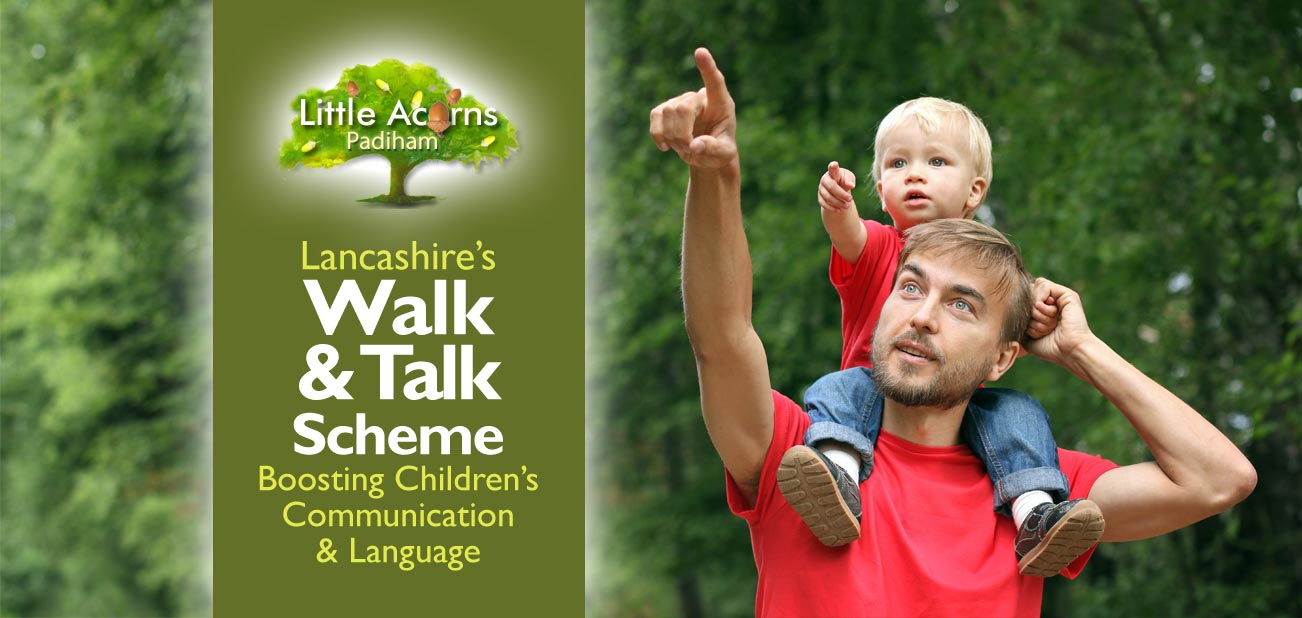
 Lancashire’s Walk & Talk Initiative is a scheme that’s wholeheartedly supported by the childcare practitioners at Little Acorns Nursery in Padiham. We encourage all Lancashire parents to take part too. It’s an initiative that is incredibly simple but has far-reaching benefits for children in their early years. Let’s take a look today at what Walk & Talk is all about, what its aims are, the benefits to children, and how families can get involved.
Lancashire’s Walk & Talk Initiative is a scheme that’s wholeheartedly supported by the childcare practitioners at Little Acorns Nursery in Padiham. We encourage all Lancashire parents to take part too. It’s an initiative that is incredibly simple but has far-reaching benefits for children in their early years. Let’s take a look today at what Walk & Talk is all about, what its aims are, the benefits to children, and how families can get involved.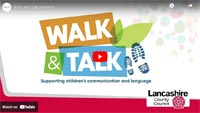
 a reduction in the ‘word gap’ — helping children learn new words and widen vocabulary;
a reduction in the ‘word gap’ — helping children learn new words and widen vocabulary; The scheme also aims to encourage children to use a variety of senses. These include, for example, sight, smell, touch, taste, hearing and, of course, active listening. When out on walks there are so many different things for children’s senses to be stimulated by and each lends itself to a conversation. Whether it’s the sound of birdsong, the feeling of the wind on their faces, the smell of freshly-cut grass on the breeze, the noise of traffic, the dazzlingly beautiful colours of blossom, or the mouth-watering smell of food cooking around the neighbourhood or town, walking is indeed a feast for the senses.
The scheme also aims to encourage children to use a variety of senses. These include, for example, sight, smell, touch, taste, hearing and, of course, active listening. When out on walks there are so many different things for children’s senses to be stimulated by and each lends itself to a conversation. Whether it’s the sound of birdsong, the feeling of the wind on their faces, the smell of freshly-cut grass on the breeze, the noise of traffic, the dazzlingly beautiful colours of blossom, or the mouth-watering smell of food cooking around the neighbourhood or town, walking is indeed a feast for the senses.
